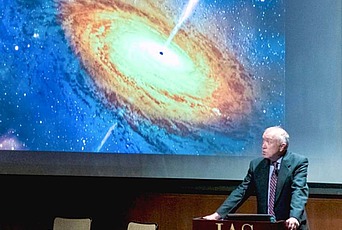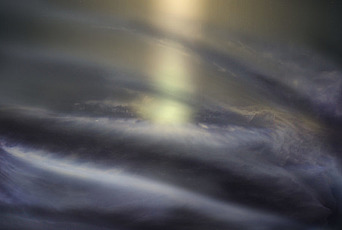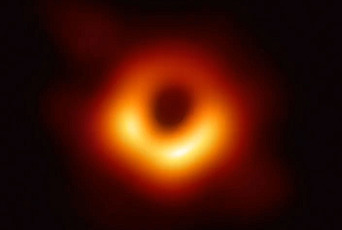Researchers Probe Features of Star Clusters Surrounding Supermassive Black Holes
Press Contact
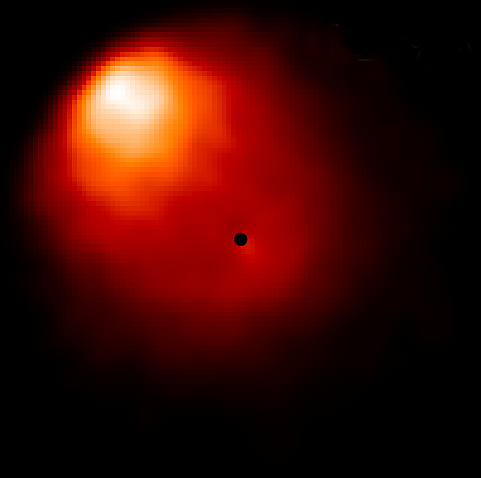
At the center of our galaxy, millions of stars whirl in orbits around a supermassive black hole. This circuit can take anywhere from a few hours for stars close to the event horizon of the black hole to thousands of years for their distant neighbors. The nature of the dance—how the stars interact collectively through their gravitational forces—can vary from galaxy to galaxy.
In the paper “Order-Disorder Phase Transition in Black-Hole Star Clusters,” published in Physical Review Letters on July 12, 2019, scientists from the Institute for Advanced Study, American University of Beirut, and Leiden University have taken the first steps toward understanding the collective orbital patterns that emerge in star clusters surrounding a supermassive black hole. By studying these star clusters and how they evolve, researchers are gleaning new insights into the behavior of supermassive black holes and their influence over their stellar surroundings.
Based on a series of numerical models and simulations, the team has shown that black hole star clusters can undergo a phase transition from a spherical state to a lopsided state when they are cooled below a critical dynamical temperature. This phase transition, in some senses, is similar to the phase transition that occurs when a liquid changes into a solid. Just as molecules may shift from a disordered liquid state to a state where they are frozen in place, these star clusters are capable of achieving equilibrium in either a disordered (spherical) or an ordered (lopsided) structure, depending on their properties and environment.
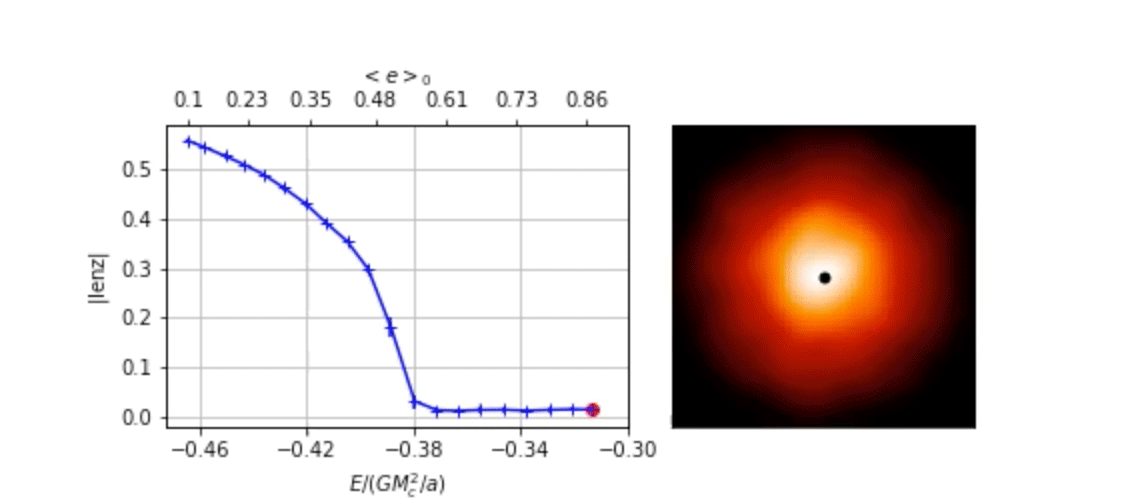
Click here to view animated graphic.
“These systems exhibit surprisingly rich behavior, with remarkable parallels to well-studied laboratory phenomena such as freezing and ferromagnetism,” stated Scott Tremaine, Richard Black Professor at the Institute for Advanced Study, one of the paper’s three authors. “These new phenomena may dramatically change our understanding of the environment of supermassive black holes and enhance our ability to understand the rates and properties of supermassive black hole mergers, consumption of stars by black holes, and other phenomena at the centers of galaxies.”
A lopsided nuclear star cluster surrounding a supermassive black hole is seen in Hubble Space Telescope images of the nearby Andromeda Galaxy. On the other hand, our home Milky Way galaxy and M87—recently imaged by the Event Horizon Telescope—harbor spherical clusters. For more distant galaxies, the nuclear star clusters are too small to be imaged by existing telescopes, but the cluster shapes may strongly influence transient events that we can observe, such as flares from tidally disrupted stars and gravitational wave signals from stars spiraling into the black hole.
“The present work is, in more ways than one, the culmination of our program of research on the thermal properties of black hole star clusters. It lays the groundwork for studying their collective response to evolutionary and environmental perturbations,” stated Jihad Touma, another of the paper’s authors. “We believe that the model systems which we have identified and analyzed are realistic and versatile enough to play for gravity the role that the Ising model played and continues to play for magnetism.”
Further investigation of how nuclear star clusters form and evolve will be needed to determine how frequently phase transitions of this kind occur in nature. However, the presence of a lopsided cluster in Andromeda, our galaxy’s nearest large neighbor galaxy, suggests that this is a common process in the universe.
The research team consists of Jihad Touma of American University of Beirut and a former IAS Member and Visitor (2007–09; 2013–14; 2017) in the School of Natural Sciences; Scott Tremaine of the Institute for Advanced Study; and Mher Kazandjian of Leiden University.
A link to the paper detailing the team’s methods is available here. The team acknowledges the use of IAS computing facilities for performing computations essential to their work.
About the Institute
The Institute for Advanced Study is one of the world's foremost centers for theoretical research and intellectual inquiry. Located in Princeton, N.J., the IAS is dedicated to independent study across the sciences and humanities. Founded in 1930 with the motto "Truth and Beauty," the Institute is devoted to advancing the frontiers of knowledge without concern for immediate application. From founding IAS Professor Albert Einstein to the foremost thinkers of today, the IAS enables bold, nonconformist, field-leading research that provides long-term utility and new technologies, leading to innovation and enrichment of society in unexpected ways.
Each year, the Institute welcomes more than 200 of the world's most promising researchers and scholars who are selected and mentored by a permanent Faculty, each of whom are preeminent leaders in their fields. Comprised of four Schools—Historical Studies, Mathematics, Natural Sciences, and Social Science—IAS has produced an astounding record of introducing new understanding and is responsible for undeniable progress across disciplines and generations, from the development of one of the first stored-program computers to the establishment of art history as a discipline in the United States. Among its present and past Faculty and Members are 34 Nobel Laureates, 42 of the 60 Fields Medalists, and 18 of the 20 Abel Prize Laureates, as well as many MacArthur Fellows and Wolf Prize winners.
